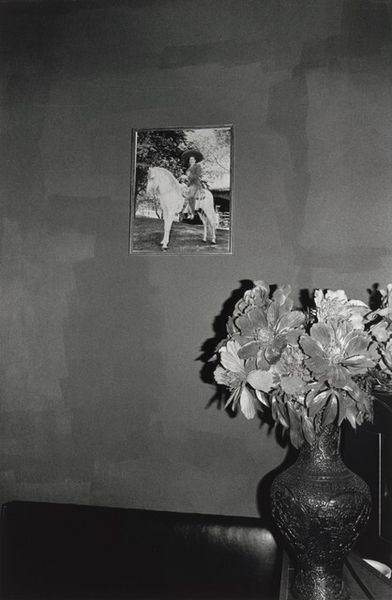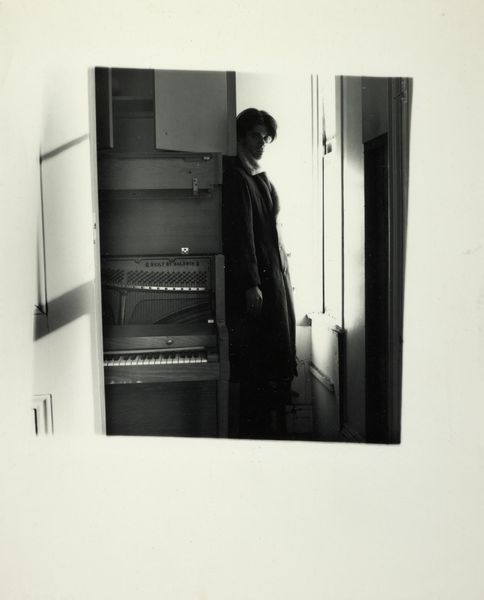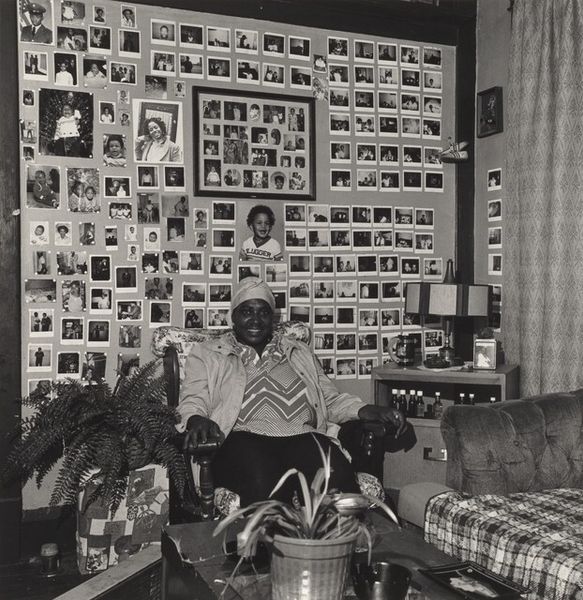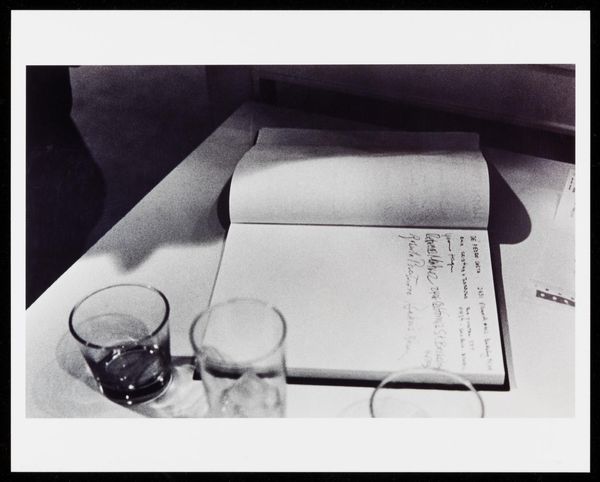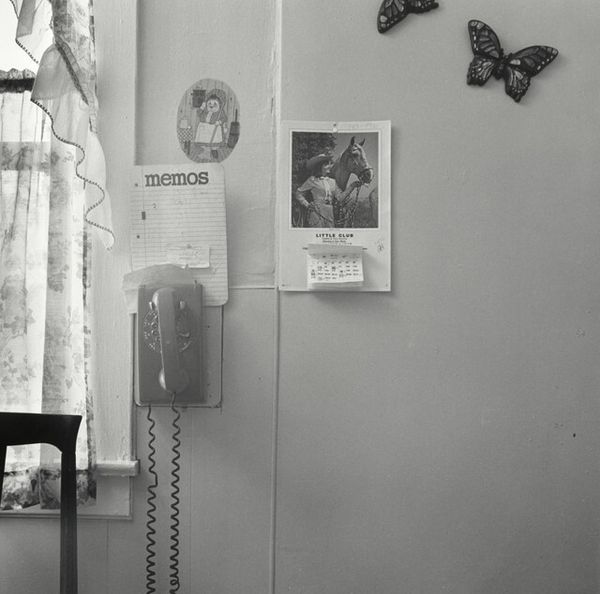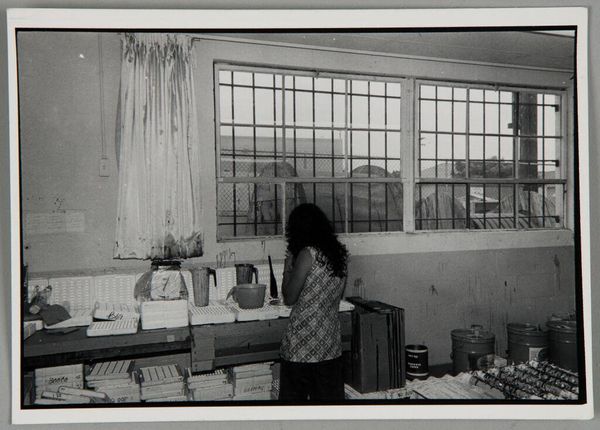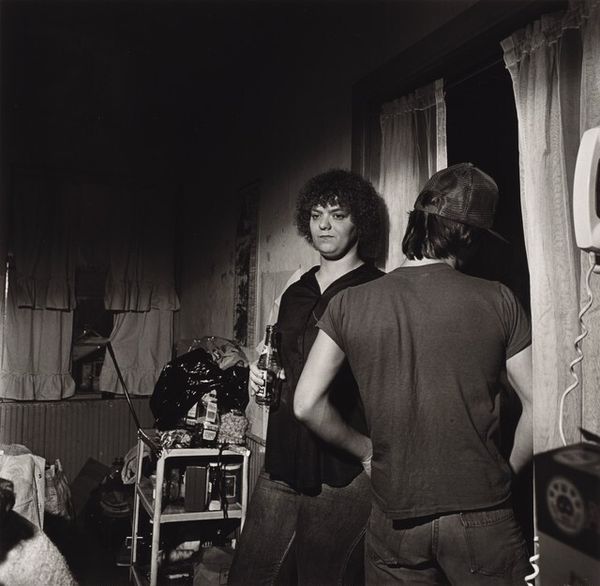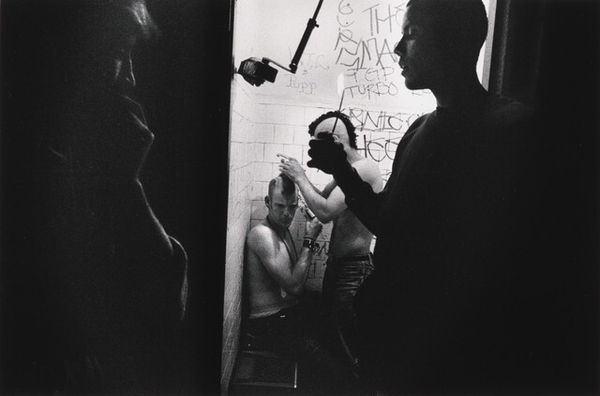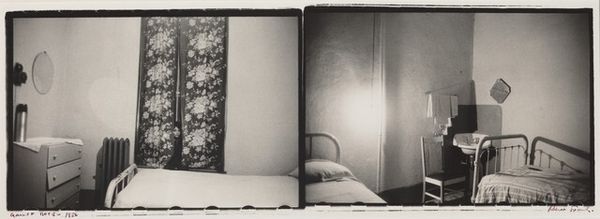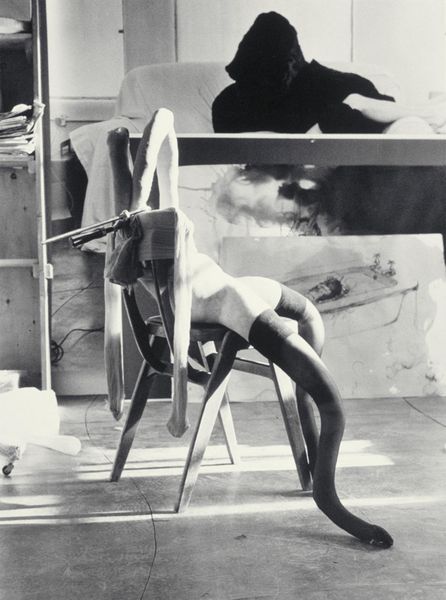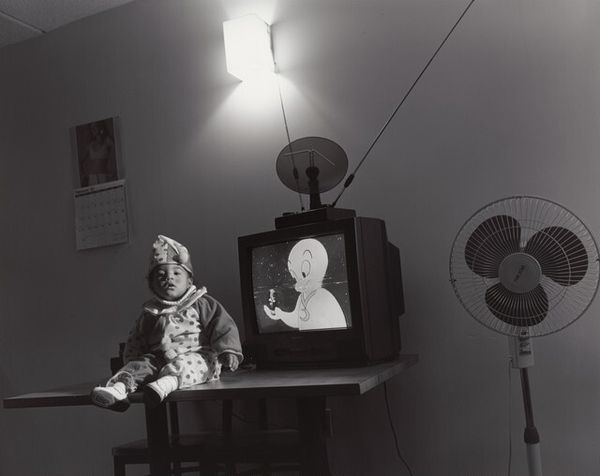
Sabatine-Miller Graduation Party, Martins Creek, Pennsylvania 1977
0:00
0:00
#
wedding photograph
#
black and white photography
#
black and white format
#
warm monochrome
#
archive photography
#
historical photography
#
black and white theme
#
black and white
#
monochrome photography
#
monochrome
Dimensions: image: 35.7 × 36.2 cm (14 1/16 × 14 1/4 in.) sheet: 50.5 × 40.4 cm (19 7/8 × 15 7/8 in.)
Copyright: National Gallery of Art: CC0 1.0
Editor: This is Larry Fink's "Sabatine-Miller Graduation Party, Martins Creek, Pennsylvania," taken in 1977. It's a black and white photograph that, to me, feels really intimate and almost voyeuristic, like we're peeking into a very personal celebration. What do you see when you look at this piece? Curator: The first thing I note is the carefully arranged composition. Fink masterfully utilizes the stark contrast of light and shadow to guide the eye. The plane of the cake, almost brutally square in format, anchors the bottom of the frame, while the wall of family photos rises into the shadows at the top. The composition operates as a series of planes, consider for example, how he’s orchestrated these surfaces. Does that strike you? Editor: Definitely. The cake really stands out because of that direct lighting, drawing attention to the congratulations message. And those photographs above it seem so personal, even though we don't know the people in them. How would you say the materiality of the image contributes to the mood? Curator: It's fascinating how the monochromatic palette actually heightens the emotional impact. The absence of color encourages us to focus on form, texture, and the subtle gradations of tone. Note how he plays with sharp focus in certain areas and soft blur in others to create depth and visual interest. The graininess inherent in black and white photography adds another layer of texture. Consider how Fink has manipulated those grayscale values, drawing you into these familial tensions on display in this intimate space. What is he implying about the values of domesticity? Editor: That makes sense. I was initially drawn to the expressions of the people in the photographs on the wall and the somewhat cluttered table, but now I see how Fink's specific choices around lighting and the grain of the image emphasize the atmosphere and the specific affect it creates. Curator: Exactly! This is where the artistry resides – in Fink's careful selection and manipulation of formal elements to transcend the literal depiction of a scene. This rigorous formal inquiry becomes an inquiry of domestic and intimate affect. Editor: Thanks, I definitely learned something about the power of these types of arrangements. Curator: Indeed. I was impressed by your attention to domestic symbolism, leading to an investigation of these values through composition and structure.
Comments
No comments
Be the first to comment and join the conversation on the ultimate creative platform.

